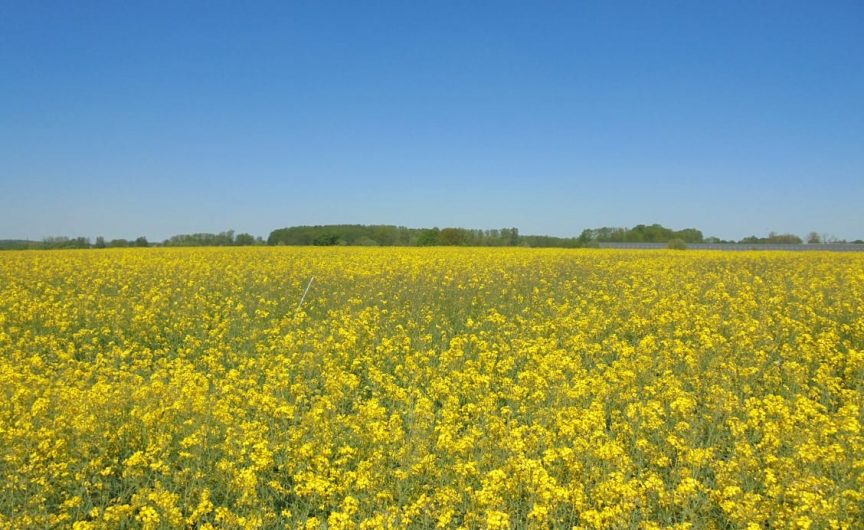In the field trial from 2017/2018, the fertilisation effect of DOMOGRAN® 45 the result of fertilisation was juxtaposed with on the one hand elemental sulphur, urea and urea with elemental sulphur, as well as on the other hand a control version without any fertiliser. The aim was to compare and assess the DOMOGRAN® 45 with the remaining fertilisation methods. The feature of this product is the quick and good availability of sulphur in the form of sulphate. The other fertilisers from the trial only contain elemental sulphur, which is not particularly good for plants. Elemental sulphur is first slowly converted from microorganisms into a sulphate. Thus this trial dealt with the question of how far the essential sulphur is available to plant in the form of elemental sulphur within a growth period, and whether there was a significant difference to the fertiliser with DOMOGRAN® 45.
The test set-up
The trial area was on the Nauen Plateau on a sandy, loamy soil with 35 ground markers. The plots already has a plant size of 30 m², whereby an area of 12 m² is always harvested. Winter oilseed rape was selected as the trial crop and in August 2017 the area was cultivated with oilseed rape. The trial field was divided up in such a way that there were four repetition areas for each fertiliser variant (number 1 to 4), using this a mean could be determined for the course of the trial.
The growing period was influenced by warm temperature and the start of high and later lower precipitation. Because it was very cold (-2°C to 3°C) at the beginning of 2018, the start of growth was somewhat behind. At the beginning of the year, it was however, both cold and also had low precipitation. The nevertheless high level of soil moisture would suggest that the water of the previous year 2017 could supply the plants well into late spring of 2018.
Throughout the entire growing period leaf samples were taken and measurements of the leaf colour were recorded. Soil samples continued to be taken prior to fertilising and after the harvest, and both the yield and quality of the crop were investigated. All of these control parameters could be assessed in order to come to a meaningful conclusion at the end.
Results
Using these samples determined that there was no difference between the blossom structure or the pod development among the plots with different fertilisers. Only the number of blossoms and thus the blossom intensity visibly deviated from one another.
After the harvest and the assessment of the parameters, it could be seen that there were differences between the harvest yields of the fertilised plots, however the unfertilised areas deviated significantly from the values of the other areas. Generally speaking, the highest yield was achieved after fertilising with DOMOGRAN® 45 . Even the fertilisation with elemental sulphur clearly increased the average yield compared with the variants without sulphur. The sulphur content in the oilseed rape seeds was increased through the administration of elemental sulphur. However, the content in the crop fertilised with DOMOGRAN® 45 was highest.



